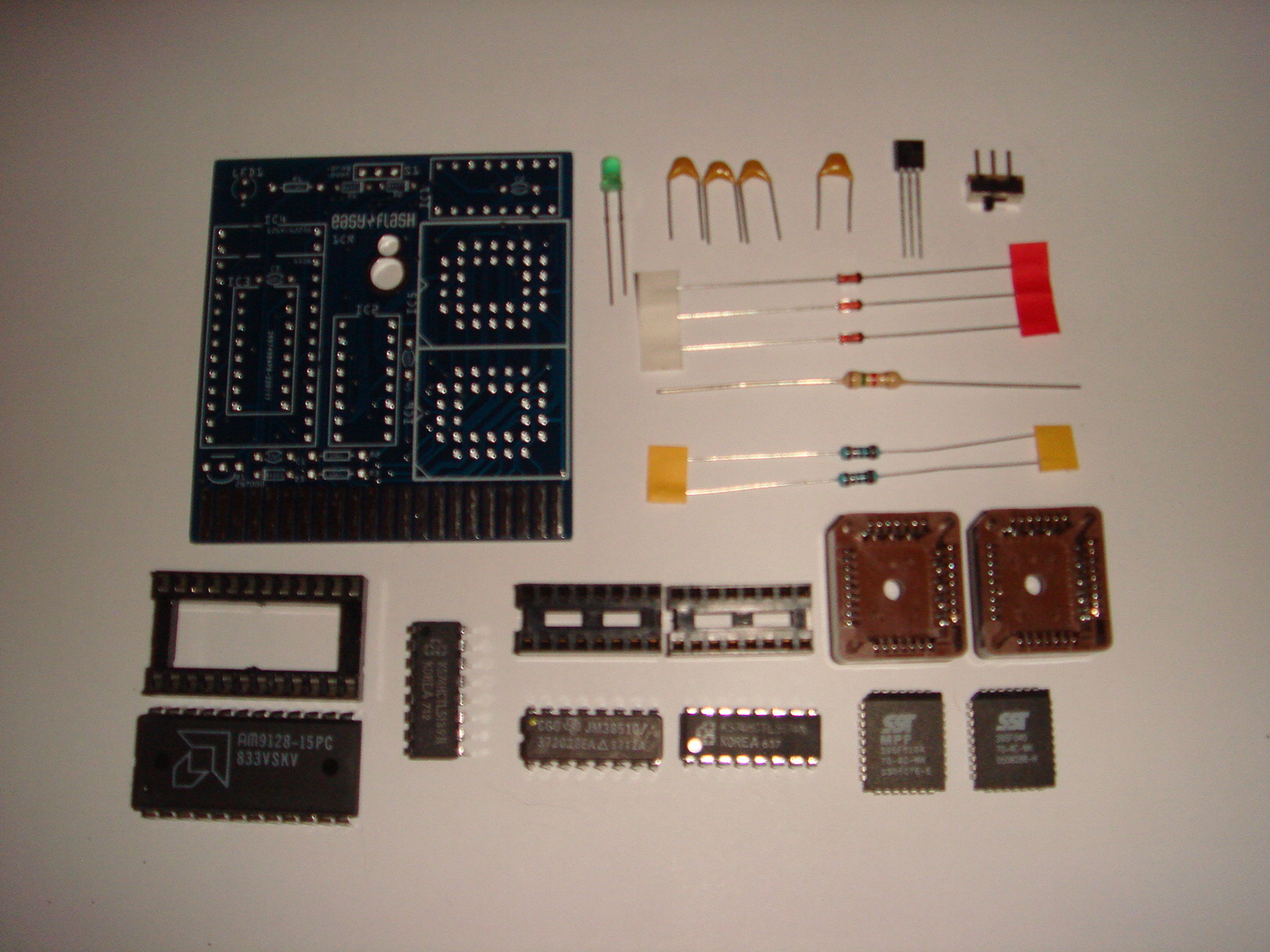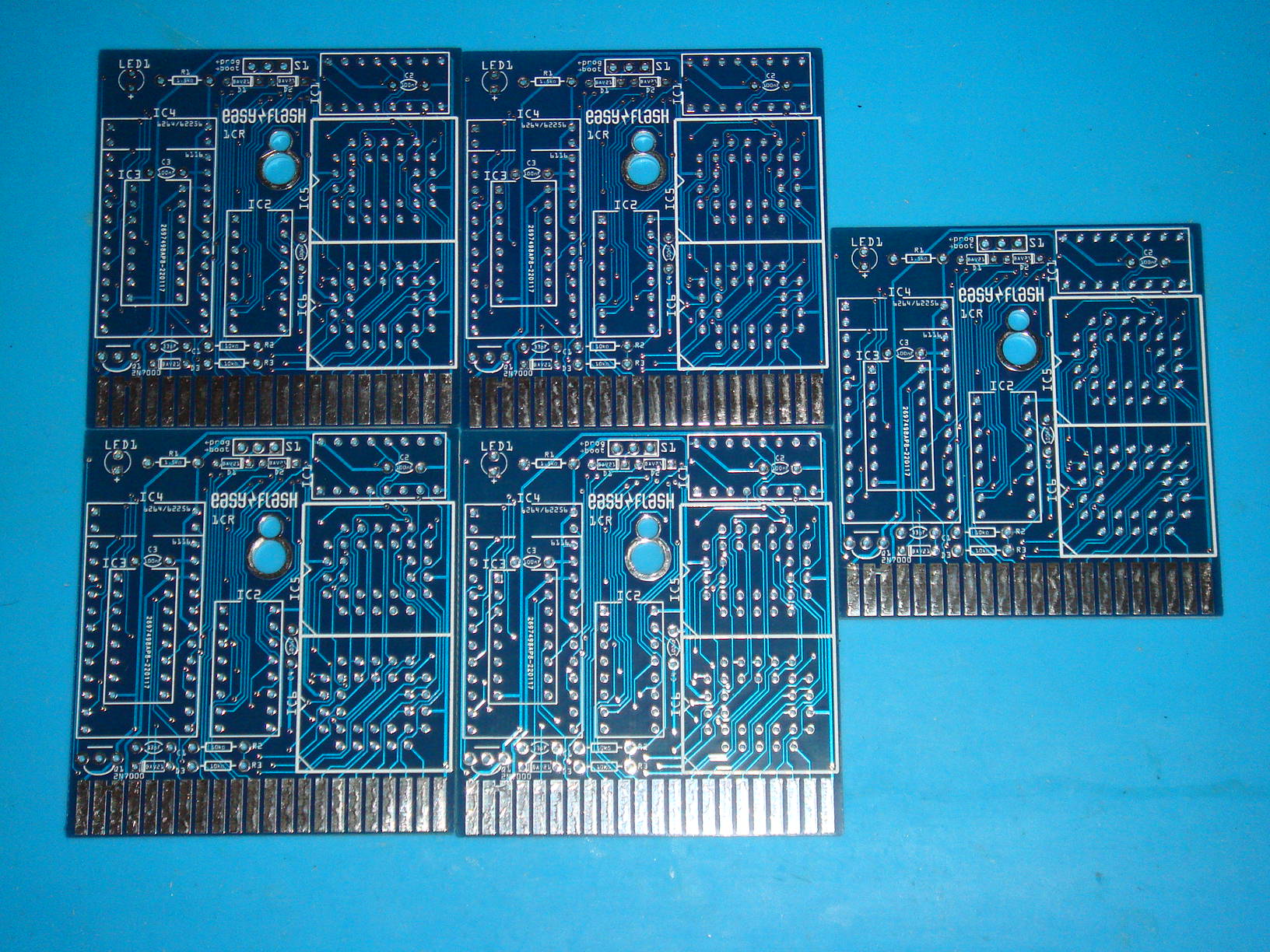- 100% functionally equivalent to the original EasyFlash cartridge.
- Socketed Flash ROM/EEPROM allows flashing in EPROM programmer.
- Optimized for DIY builds with THT components.
- Cartridge inhibit switch allows BASIC boot with cartridge inserted.
- Compatible with cartridge cases from Individual Computers, The Future Was 8-bit & Protoparts.
Introduction
The EasyFlash format is today highly popular for C64 software releases. I consider the original EasyFlash 1 cartridge still relevant. Actually even more relevant than the EasyFlash 3, the ability to select between EasyFlash images is nowadays offered by a wide range of devices, including EasyFlash 3, Kung Fu Flash, Backbit, 1541 Ultimate and more. However, some times a game is good enough that you want a dedicated cartridge for the game and if you want a dedicated cartridge, the original EasyFlash cartridge is still the hardware to go for.The EasyFlash is a rather large cartridge with many components on them and therefore takes some time to build. While building some EasyFlash cartridges I started to look into the electronic design and started to realise wasn't optimal and could be possibly be built from less components. I did reconstruct logic equations from the original design and then started to look how it could optimally be converted into a circuit. The result of this is the EasyFlash 1CR.
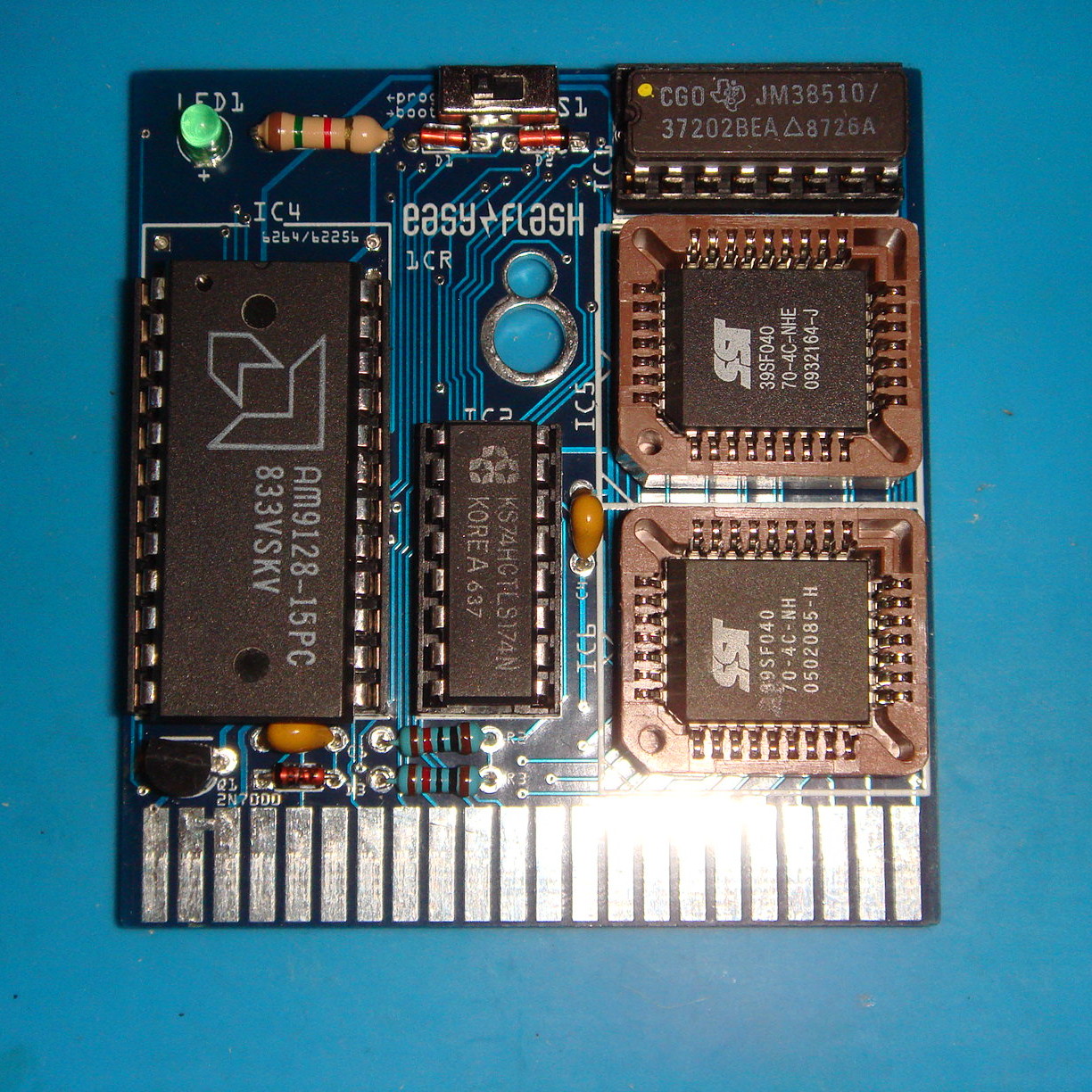
| 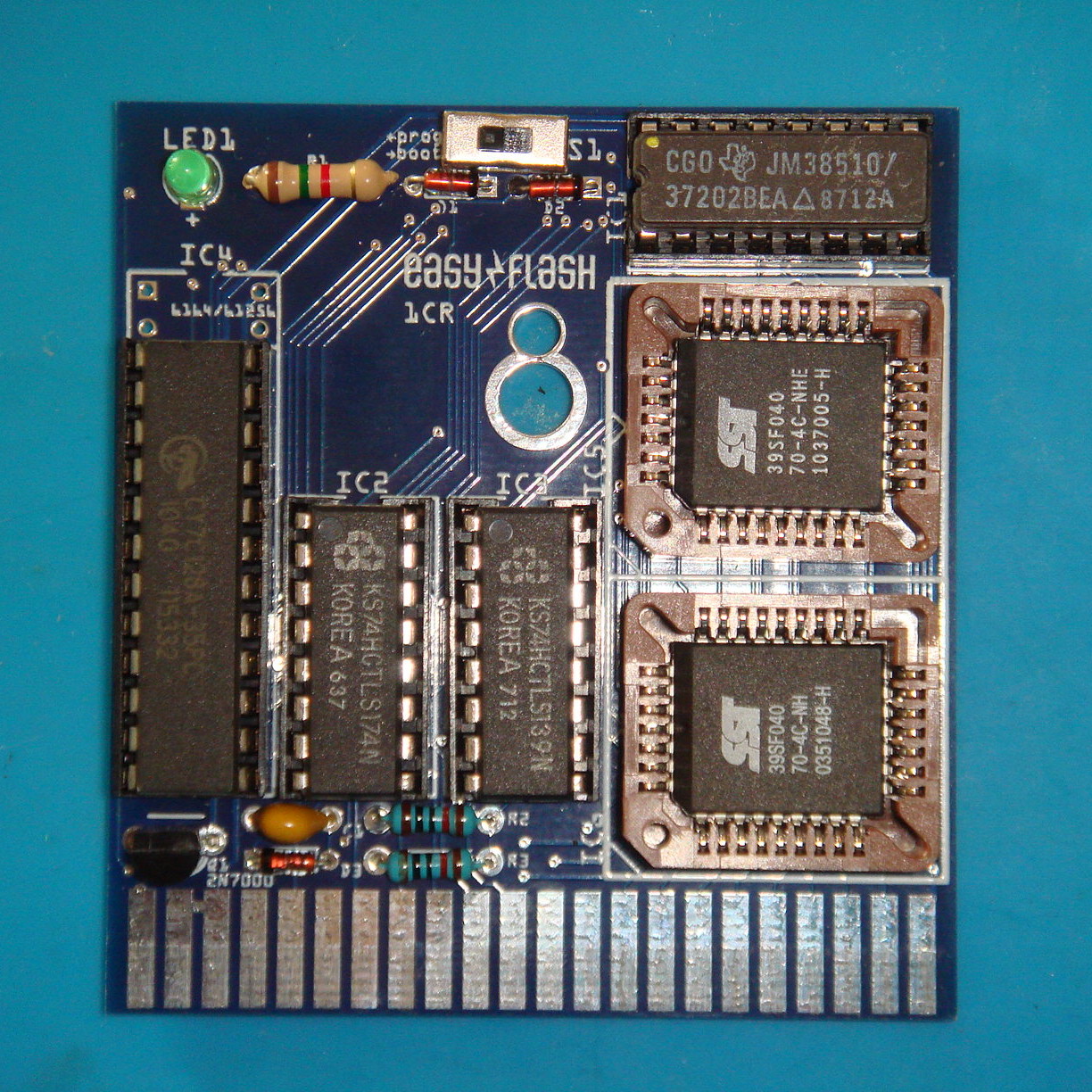
|
| Wide SRAM version | Narrow SRAM version |
How does the EasyFlash 1 CR compare against the EasyFlash 1
From a usage point of view, there is no difference between the original EasyFlash 1 and the EasyFlash 1CR. The amount of components needed to build the cartridge is lower, it takes slightly less time to build and it can fit in the "stumpy" cartridge cases.| EasyFlash 1CR | EasyFlash 1 | |
|---|---|---|
| Number of integrated circuits | 6 | 8 |
| Number of non-IC components (excluding sockets) | 13 | 17 (incl. wire bridge) |
| Number of unique components (excluding sockets) | 13 | 15 (incl. wire bridge) |
| Dimensions | 61x57mm | 82x57mm |
| Reset button | No | Yes |
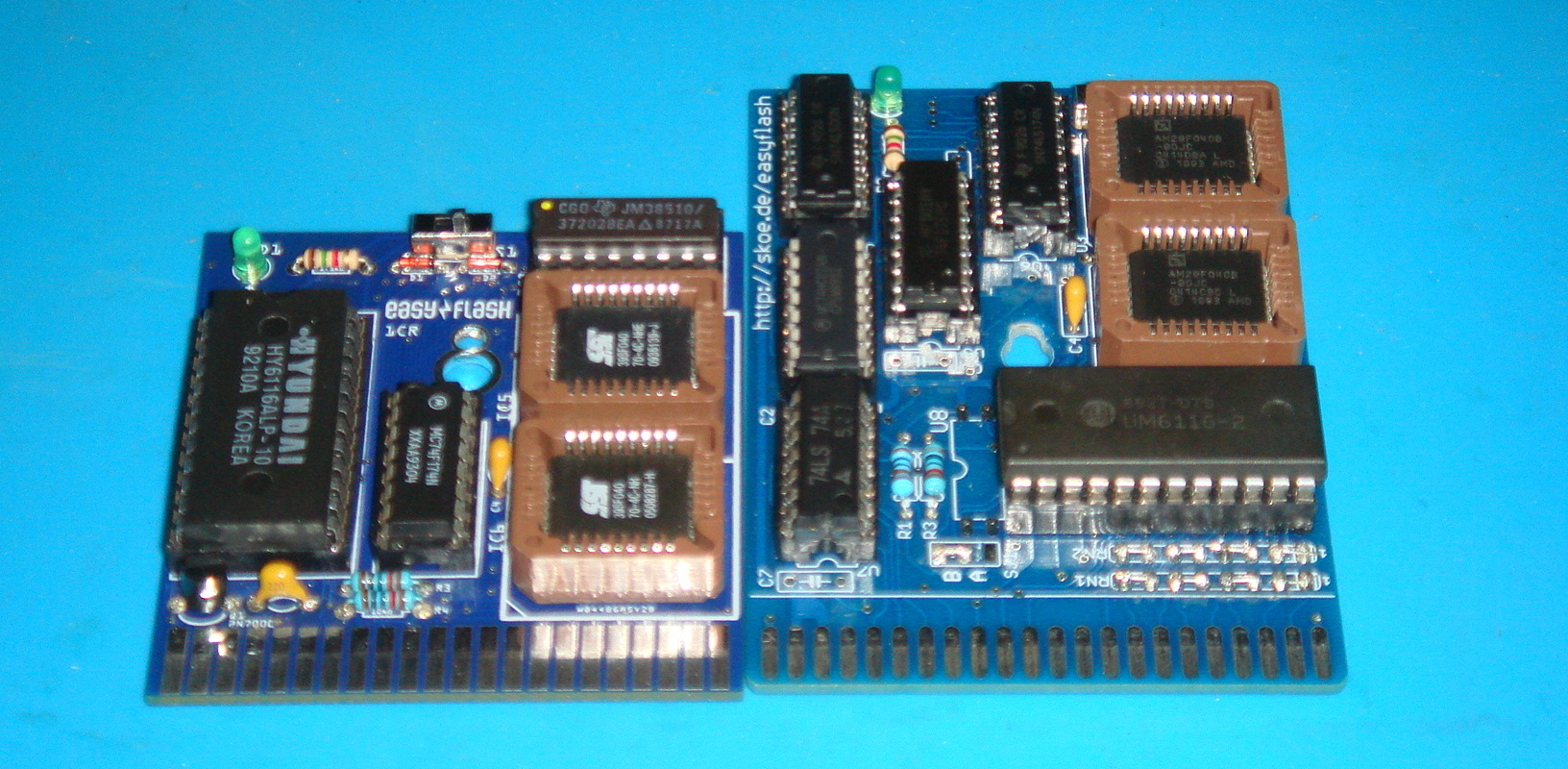
|
| EasyFlash 1CR and the original EasyFlash 1.4.1 side by side |
Should I release my game in EasyFlash or Gmod2 format?
Please look at the following data comparison:| Easyflash | Gmod2 | |
|---|---|---|
| Storage capacity | 1024KB | 512KB |
| Allowed C64 modes | Normal, 8K crt, 16K crt, ultimax | Normal, 8k crt |
| On cartridge save capability | Flash reprogramming | Dedicated EEPROM |
| Suitable for mass production | Less suitable | Very suitable |
Generally, if you want to release the game in physical form, Gmod2 is often attractive because of the lower cost and availability of mass produced cartridges. EasyFlash scores poor in this regard because of the higher component count, but also because it needs a legacy SRAM.
Both Gmod2 and EasyFlash can be used for on-cartridge saving. Writing to the Gmod2 EEPROM, in which individual bytes can be updated, is relatively easy compared to having to work with 64KB sectors on EasyFlash. An entire sector needs to be erased at once and some wear leveling algorithm might be necessary in order to prolong life of the flash memory. On the other hand, if 2KB of EEPROM is not enough, this is an indicator to target the EasyFlash format.
Another indicator to target the EasyFlash format is the larger ROM capacity of 1MB and if the 16K crt or Ultimax operating modes are of use to you.
EasyFlash is around for a longer time than Gmod2 and traditionally has seen more support by emulators and third party hardware. As a result, many developers did choose Easyflash. However, Gmod2 appears to have catched up and the difference in support is nowadays small.
Flashing
The EasyFlash 1CR can be programmed by the same tools as the original EasyFlash 1 cartridge, in particular EasyProg. is If your cartridge contains SST39SF040 flash ROM's, version 1.8.1 of EasyProg is required, because EAPI support for the SST39SF040 doesn't exist in older versions. If your cartridge contains AM29F040 flash ROM's, older versions can also be used.EasyFlash images are 1MB in size. This is a lot of data for a Commodore 64. If you want to flash EasyFlash cartridges from the C64, a modern storage device such as SD2IEC or 1541 Ultimate is recommended.
Download EasyProg here:
Because the flash ROMs are in sockets, you can of course also use an EPROM programmer. In order to convert an EasyFlash .crt file into two .bin files (one for each ROM), use the CRT2CHIP program.
Cartridge cases
The cartridge has been designed with two mounting holes, which makes it compatible with a range of available cartridge cases. The following C64 cartridge cases are compatible: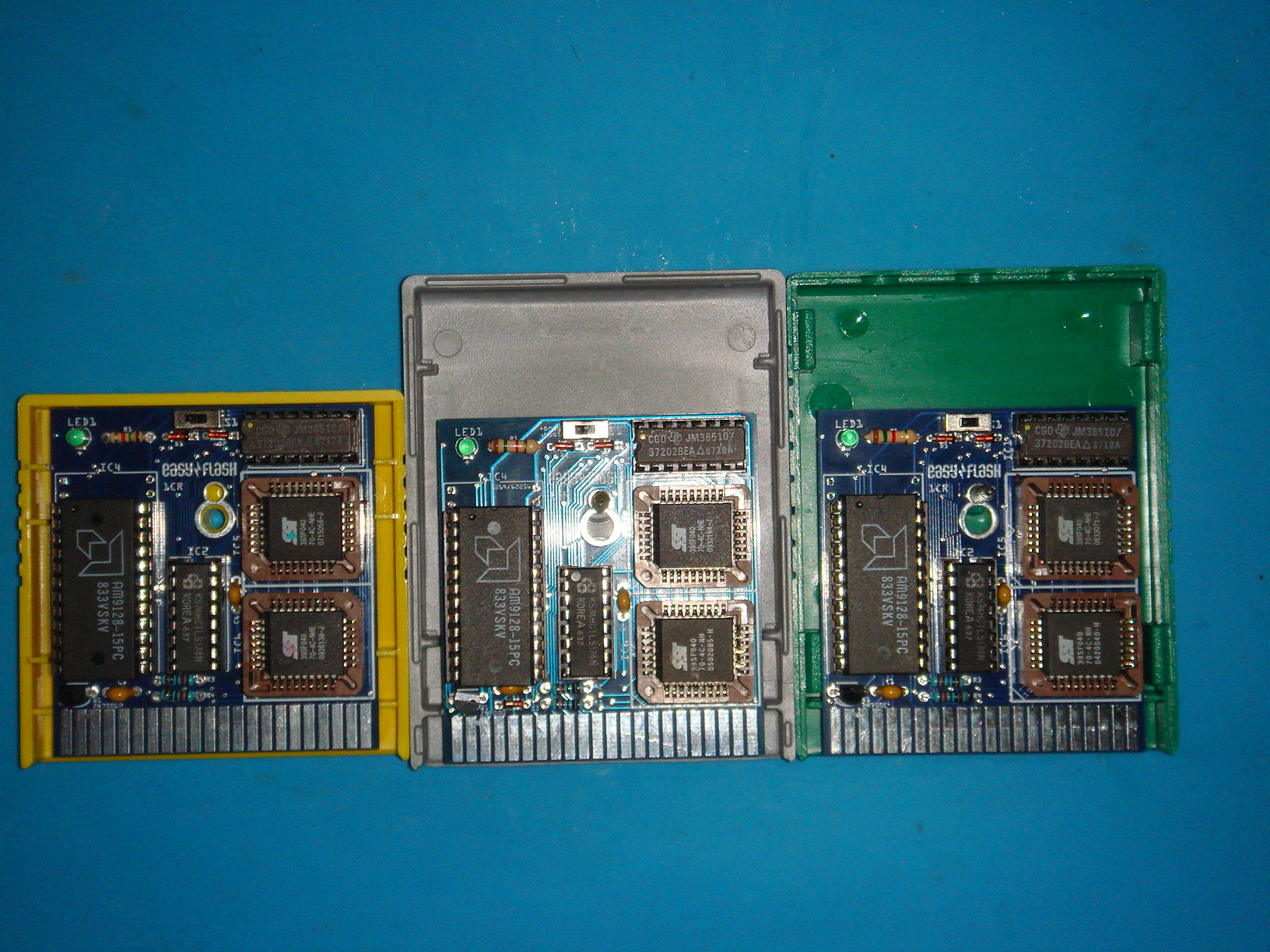
From left to right: Cartridge cases from The Future Was 8-Bit, Protoparts and Individual computers.
Q & A
Q: You did remove two chips. They were there for a reason. Is the cartridge really 100% functionally equivalent?
A: It is. Because of higher integration, it can be possible to offer the same functionality with less chips. I have converted the original circuit into logic equations and then looked how I could translate the equations back into a circuit in the most optimal way. Nothing has been removed from the equations, everything is present in the new cartridge, which means all functionality present in the original cartridge is also present in the EasyFlash 1CR cartridge.
Q: I really want a reset button!
A: Drill a hole in your cartridge case and install a "panel mount" button into it. Solder the button to pin 1 and pin 8 of the 74x175 socket.
Q: What about a C128 version like the Gmod2?
A: It isn't really necessary. The toggle switch on the cartridge, determines wether the computer boots in "normal" or "ultimax" mode. If the switch is in the "normal" position, a Commodore 128 will boot in C128 mode and check the cartridge for the correct signature. If the cartridge ROM contains the right header, the C128 will boot the cartridge in native mode. The ROML flash ROM will be mirrored two times in the C128's MIDROM region and the ROMH flash ROM will be mirrorred two times in the C128's HIROM region.
Because the C128 cartridge header is at the bottom of the cartridge bank and and the C64 reset vectors are at the top of the cartridge bank, you can even make a cartridge that can run in native mode on both computers, using the toggle switch as a C64/C128 switch.
Obtaining a PCB
You can order PCBs from me or produce them yourselves. I have uploaded the Gerber files to PCBWay, you can order the PCB here: The only difference between both versions is wether a 0.6" wide 6116 SRAM chip is used or a 0.3" wide SRAM chip. In the wide SRAM version, the 74x139 chip is mounted under the SRAM and won't be socketed.If you order from PCBWay, I will receive a small donation from PCBWay so you will support me that way. However, if you really want to manufacture the PCB somewhere else, I have enabled the Gerber download button on PCBWay, so you can download the Gerber files there and produce it at the PCB manufacturer of your choice.
Schematics
Download the schematics:Obtaining a cartridge
I am selling the DIY Gmod2 Magic Desk cartridge on SellMyRetro. Please make your choice:
It is not mandatory to use Sell My Retro, if you don't like to create an account there. If you would like to
buy directly, fill in the following form:
Contact
Do you have any questions or would you like to contact me for some other reason? You can e-mail me at daniel.mantione at freepascal dot org, or use the following form:Thanks
Many thanks to Thomas Giesel for the original EasyFlash design.(C) 2021 by DaniŽl Mantione

